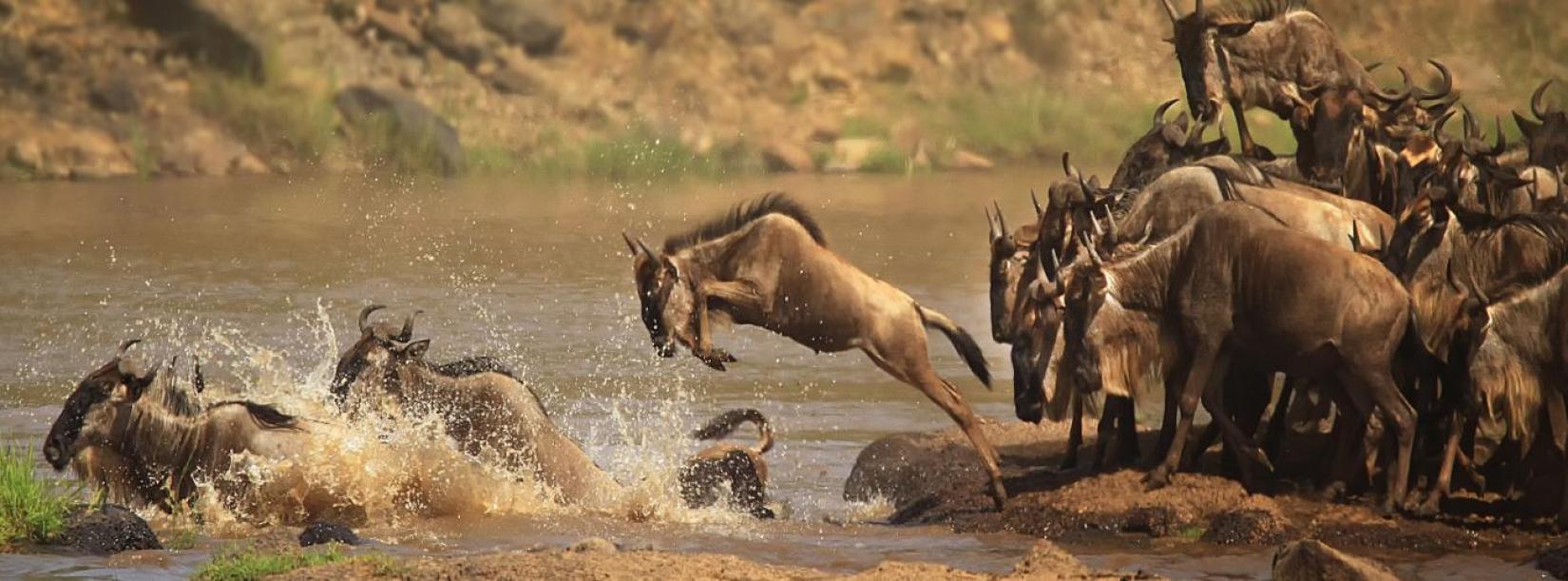
World Wildlife Day - 3 March
The incalculable value of wildlife
People everywhere rely on wildlife and biodiversity-based resources to meet our needs - from food, to fuel, medicines, housing, and clothing. For us to enjoy the benefits and the beauty that nature brings us and our planet, people have been working together to make sure ecosystems are able to thrive and plant and animal species are able to exist for future generations. So, let’s celebrate wildlife and the important conservation work being done around the world!
World Wildlife Day is an opportunity to celebrate the many beautiful and varied forms of wild fauna and flora and to raise awareness of the multitude of benefits that their conservation provides to people. At the same time, the Day reminds us of the urgent need to step up the fight against wildlife crime and human-induced reduction of species, which have wide-ranging economic, environmental and social impacts. Given these various negative effects, Sustainable Development Goal 15 focuses on halting biodiversity loss.
Get involved
Organize your own event or share your commitment to wildlife on social media.
Spread the word, especially to children and youth. They are the future leaders of wildlife conservation and they deserve a future where we humans live in harmony with wildlife that share the planet with us. Here are some outreach materials.
Remember to use the hashtags #WorldWildlifeDay and #ConnectingPeopleAndPlanet on your social networks.
“Connecting People and Planet: Exploring Digital Innovation in Wildlife Conservation”
World Wildlife Day 2024 (#WWD2024) focuses on digital innovation and emphasizes how digital conservation technologies and services can drive wildlife conservation, sustainable and legal wildlife trade, and human-wildlife coexistence. The 2024 theme, “Connecting People and Planet: Exploring Digital Innovation in Wildlife Conservation”, recognizes the impact of digital interventions on ecosystems and communities in an increasingly connected world.
We find ourselves amidst a global digital revolution that is dismantling barriers to people-centered digital governance and equal opportunities. The ‘digital divide’ is gradually shrinking, with improved connectivity and Internet access now reaching 66 percent of our global population. However, approximately 2.7 billion people worldwide remain offline. In the least developed countries and landlocked developing nations, only an average of 36 percent of the population has online access. Furthermore, women and young individuals are disproportionately affected by gaps in Internet access and job-ready digital skills.
While technological advancements have significantly improved various aspects of wildlife conservation, including research, communication, tracking, and DNA analysis, challenges such as uneven access, environmental pollution, and unsustainable technology use impede achieving universal digital inclusion by 2030.
World Wildlife Day 2024 serves as a platform for cross-generational exchange and youth empowerment. Through art, presentations, and discussions, it focuses on the opportunities for sustainable digital wildlife conservation. It encourages exploration of existing digital innovations, addresses intersectional discrepancies, and envisions inclusive digital connectivity for all people and the planet.
This year, the CITES Secretariat has teamed up with the United Nations Development Programme (UNDP), WILDLABS, Jackson Wild, and the International Foundation for Animal Welfare to promote these vital discussions
More information in the World Wildlife Day.
The Kunming-Montreal Global Biodiversity Framework was adopted on December 19, 2022. This historic Framework, which supports the achievement of the Sustainable Development Goals and builds on the Convention on Biodiversity's previous strategic plans, sets out an ambitious pathway to reach the global vision of a world living in harmony with nature by 2050. Among the Framework’s key elements are 4 goals for 2050 and 23 targets for 2030.
Read more: Global Biodiversity Framework
In Kyrgyzstan’s Tien-Shan mountain range, a micro-reserve has been created through the joint efforts of villagers and a local organization. Covering 14,000 hectares of grasslands and glaciers, this reserve enforces stringent regulations on activities like hunting and grazing. Since its establishment, the populations of snow leopards and wild goats have grown, and local residents are capitalizing on fresh economic prospects. They oversee guesthouses, engage in cheese production, and craft felt souvenirs.
Read more: Saving the snow Leopard
- 50,000 Wild Species Meet Needs of Billions Worldwide.
- 1 in 5 people around the world rely on wild species for income and food, while 2.4 billion people depend on wood fuel for cooking.
- It seems surprising, but cacti, seaweeds, giraffes, parrots, and oak trees are groups of species endangered. Currently there are one million species under threat.
Virtual event
The WWD2024 will be celebrated on March 3 and a high-level event will take place on March 4 at the United Nations Headquarters in New York. You can follow the live webcast on UN WebTV.
And if you can't attend this event, find out about other initiatives that will take place around the world and in which you still want to participate.
UN courses on biodiversity






